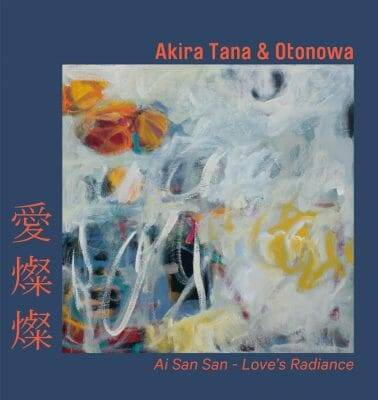Akira Tana & Otonowa Love’s Radiance (Ai San San)
Akira Tana & Otonowa
Love’s Radiance (Ai San San)
Vega
Drum master Akira Tana is releasing the third album with his group Otonowa, which was founded in 2012 to tour and raise funds for the communities devastated by the earthquake and tsunami that struck Japan in 2011. That earthquake registered a whopping 9.1, damaged the nuclear reactors in Fukushima, caused massive flooding, and resulted in the deaths of over 20,000 people. The band has toured the still struggling to recover region since 2014.
Tans is top drawer drummer who has performed with jazz greats Sonny Rollins, Sonny Stitt, Zot Sims, Hubert Laws, and countless others, appearing on over 200 recordings as a sideman or leader. In the ‘90s he made five CDs with the quintet TanaReid, which he co-led with bassist Rufus Reid.
His group is comprised of Americans of Japanese descent. Tana was born and raised in California as wea Art Hirahara, the versatile pianist and composer who resides in New York and has three of his own albums as a leader. The others were either born in Japan or grew up there but now call the U.S. home. Masaru Koga plays saxes, flute, and shakuhachi (a Japanese bamboo flute). Bassist Noriyuki “Ken” Okada was born in NYC but was raised in Brazil and Japan. Additional members for this project are Shoko HIkage, a koto (Japanese zither) master, percussionist Kenny Endo, and Tetsuya Tatsumi, a popular trumpeter and cornetist who resides in Tokyo.
The music pays homage to the victims and survivors by presenting traditional and pop Japanese songs completely transformed into instrumental jazz. Some of them have been part of Japanese culture for generations, and the pop tunes would be eminently recognizable by Japanese people. To we non-Japanese, it reads for the most part as straight ahead jazz with strong Eastern influence.
Unlike some members, Tana did not grow up with these songs and, if fact, his bandmates brought them to the sessions for all to learn, and for all to decide on the choice of instruments. For the sake of our readers we’ll use the English translation of the song titles, highlighting six of the eleven. The title track employs the bamboo flute and taiko drum from Endo, transforming the Japanese pop tune. “Port of Habu,” a pop song from 1923, has a distinct Asian flavor, as opens with a koto before yielding to a more contemporary solo section of soprano sax and piano, as it paints a picture of a small fishing harbor on the tiny island of Izu-Oshima.
“Bark at the Sun” was a prime-time television detective series in Japan that ran from 1972 to 1986. Bassist Okada re-harmonizes the show’s theme song to match modal changes that Miles Davis and John Coltrane incorporated into their respective iconic pieces, “So What” and “Impressions.” With Coga blowing impassioned soprano sax, this tune will clearly evoke Coltrane. “Tethered Fishermen’s Flags” is written, arranged, and performed by Tatsumi on the cornet and it’s the only track he plays on. He took three traditional fishermen folk songs and joined them together in one arrangement.
Tana contributed one of his own tunes, “Kando,” to his friend Chris Iijima, who passed away at an early age, Kando was his middle name and he was an Asian-American folk singer, educator and legal scholar. He was part of the group Yellow Pearl, whose music was an early part of Asian-American development in the early ‘70s. Given the solemnity of the overarching project, they close appropriately with a version of Horace Silver’s “Peace,” imbued by the woody, breathy shakuhachi (bamboo flute).It casts a haunting, lush conclusion to this music of astounding depth, beauty and cultural sensitivity.
- Jim Hynes
Discover more from Making A Scene!
Subscribe to get the latest posts sent to your email.









